Making organic baby food
10 Easy Organic Homemade Baby Food Recipes For The Busy Mom
When it comes to baby food, many parents would like to make their own, homemade, organic purees but because of time constraints, it can be difficult to do, which is why having a few simple, delicious recipes on hand is key when trying to accomplish this task.
With reports of metals being found in baby food recently, as well as unknown ingredients found in baby foods, more parents are looking into making organic, homemade purees for their infants. However, with some of the recipes being time-intensive or made of a handful or more ingredients, it can get intimidating to make baby food from home, especially if time constraints factor into the equation as well. But, when it comes to making purees, it does not have to be a daunting task to undertake, especially with several, easy to make recipes at hand to make.
RELATED: Freezing Homemade Baby Food: Duration & Tips For Storage
Here are some easy, organic, homemade baby food recipes for the busy mom to make.
10/10 Carrot And Broccoli Puree
via Instagram/secondlifemumThis recipe from secondlifemum includes only two ingredients that are easy to prepare to make a sweet vegetable puree. The ingredients are: 1 carrot and 1/2 head of broccoli.
Cut up the carrot into smaller pieces. Cut the broccoli away from the stem, leaving only the crowns.
Place the carrot pieces and broccoli into a steamer for approximately 12 minutes, or until soft.
Transfer the carrot pieces and broccoli into a blender and when smooth and cooled, the puree is ready to serve.
9/10 Carrot Potato Parsley Puree
via Instagram/cookingfromdheartThe earlier babies are introduced to spices, the more apt they are to try new things. As such, this puree from cookingfromdheart is a great puree to serve to little ones just getting introduced to new flavors. The ingredients needed are: 1 carrot, 1 small potato, a pinch of parsley, 1/4 teaspoon of olive oil, and warm water for needed consistency.
Remove the skin from the potato and chop into smaller pieces. Chop the carrot into smaller pieces as well.
Place the potato and carrot into boiling water. Reduce the heat and let simmer for 25 minutes or until soft.
Put the potato, carrot, parsley, and olive oil into the blender. Add a small amount of water to loosen up the puree. Serve when cooled.
8/10 Apple Puree
via Instagram/mrs.sanzzzTo make this easy, one ingredient puree from mrs.sanzzz, only one ingredient is needed: 4 medium apples.
Peel the apples. Cut the apples into smaller pieces and drop them into 1 cup of boiling water. Reduce the heat and cook for 30 minutes.
Remove the apples from water and place them into a blender. When smooth and cooled, it is ready to serve.
7/10 Dragon Fruit Puree
via Instagram/theelisachanAnother easy puree to make with only one ingredient is from theelisachan. All that is required is: 1 dragon fruit.
To prepare the dragon fruit, remove the skin and place it in 1 cup of boiling water.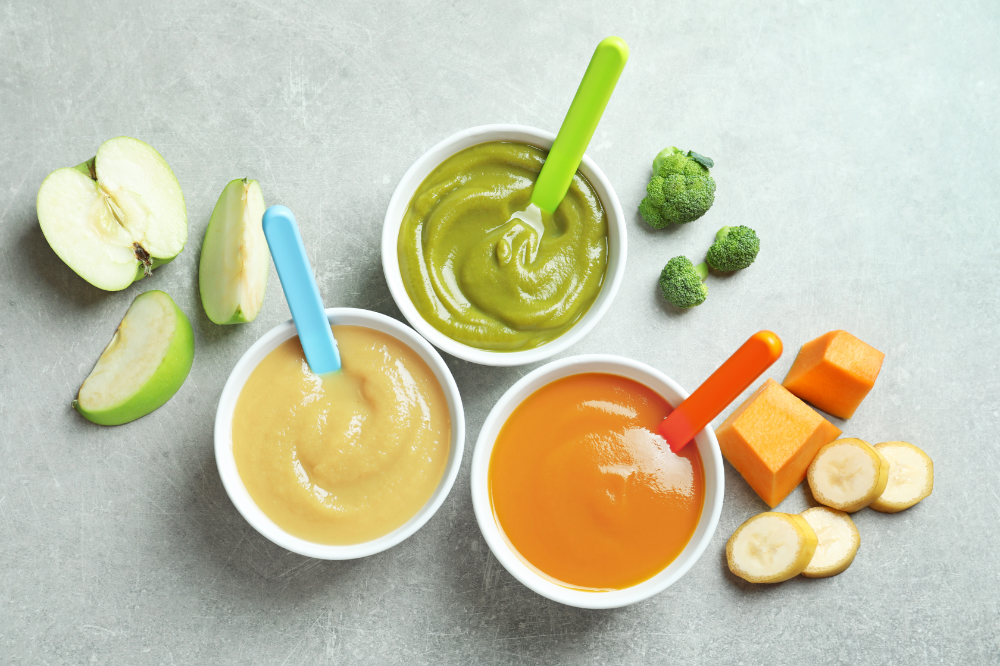 Reduce the heat and simmer for 20 minutes or until the fruit has softened.
Reduce the heat and simmer for 20 minutes or until the fruit has softened.
Remove from water and place in the blender. When smooth and cooled, the puree is ready to serve.
6/10 Sweet Potato Raspberry Banana Bread Puree
via Instagram/ happybabyfoodieThough this puree from happybabyfoodie includes more ingredients than some other purees, it is not difficult to make. The ingredients required are: 1 medium sweet potato, 1 handful of raspberries, 1 banana, and 2 slices of wheat bread.
The only ingredient that needs to be cooked in this recipe is the sweet potato. The easiest way to do this is to place it in the microwave on the potato setting to cook thoroughly.
When the sweet potato has cooled, remove the skin and dice it into smaller pieces.
Place all ingredients into a blender with 1 cup of water and when smooth, it is ready to serve.
5/10 Pear Puree
via Instagram/firstbite4lifePerhaps one of the simplest purees to make is this pear puree from firstbite4life, which only required one ingredient: 2 ripened pears.
Peel the pears. Dice them into smaller pieces.
Place pears into a blender and blend until smooth.
According to firstbite4life, the pear will turn brown when blended. This is normal and nothing to be concerned about.
4/10 Mango Kiwi Puree
via Instagram/thebabyfoodfeedThis very simple recipe from thebabyfoodfeed only requires two ingredients: 1 kiwi and 1 mango.
To make the puree, peel the kiwi and slice it into small pieces. Do the same with the mango.
Place the mango and kiwi into a blender and when smooth it is ready to be served.
3/10 Beet Pear Quinoa Puree
via Instagram/ babyv_foodjourneybabyv_foodjourney developed a puree that includes fruits, vegetables, and protein with three simple ingredients: 1 1/2 cups of chopped pears, 1/2 cup chopped beets, and 1/3 cup cooked quinoa.
To prepare the beets for the puree, wash and halve the beets
Bring 1 cup of water to a boil and reduce heat. Place the beets into the water to cook for 25 minutes.
Remove the beets and transfer them to a food processor. Include the chopped pears and the quinoa, which has been cooked per the instructions on the bag.
Blend until smooth. Serve when cooled.
2/10 Strawberry Apple Puree
via Instagram/yummytoddlerfoodThis puree from yummytodderfood only needs two ingredients: 4 medium apples and a 16-ounce container of strawberries.
To make the puree, peel the apples. Chop them into smaller pieces.
Bring one cup of water to a boil and once bubbling, add in the apples and strawberries. Reduce the heat and simmer for 30 minutes.
When done cooking, transfer the fruit only to the blender. Blend until smooth. Serve when cooled.
1/10 Banana Blueberry Avocado Puree
via Instagram/babyfoodeTo make this puree, by babyfoode, only three ingredients are needed: 1 banana, half an avocado, and a large handful of blueberries.
Unlike other purees, there is no need to steam or cook anything beforehand. All ingredients can go into the blender at the same time and voila! A delicious puree is made.
All ingredients can go into the blender at the same time and voila! A delicious puree is made.
babyfoode did mention that to breakdown the blueberry peel, that it will require the blender to be stopped every 20 seconds or so to scrape them from the sides of the blender. But, after five minutes, the puree is ready to feed to the baby.
Source: Instagram: Instagram: secondlifemum, Instagram: cookingfromdheart, Instagram: mrs.sanzzz, Instagram: theelisachan, Instagram: happybabyfoodie, Instagram: firstbite4life, Instagram: thebabyfoodfeed, Instagram: babyv_foodjourney, Instagram: yummytoddlerfood, Instagram: babyfoode, The Good Stuff, VegKitchen
NEXT: Does Making Your Own Baby Food Actually Save Money?
Ultimate Guide on Baby Food Purees (4-6+ months)
Home » Feeding Style » Baby Food Purees » Stage One » Ultimate Guide on Baby Food Purees
Here it is, the Ultimate Guide on How to Make Your Own Baby Food! Everything you need to know to get started on making homemade baby purees is right in this guide. Tips, tools, storage methods, recipe combinations, starter purees, introducing new foods — name it, and you’ll find it here! This in-depth guide is perfect for babies ages 4-6+ months!
Tips, tools, storage methods, recipe combinations, starter purees, introducing new foods — name it, and you’ll find it here! This in-depth guide is perfect for babies ages 4-6+ months!
Medically reviewed and co-written by Jamie Johnson, Registered Dietitian Nutritionist (RDN), and Lauren Braaten, Pediatric Occupational Therapist (OT).
Purees for BabyAre you wanting to make your baby homemade baby food purees but don’t know where to start?
In this guide I’ll share everything you need to know to begin, starting from the best cooking tools to have on hand and safe storage. I will also share how to know when baby is ready for solids, how to introduce purees, the best first foods for baby, starter purees, and more! They’re all ideal for babies at least 4 months old (stage 1 baby food). You can also check out my best-selling cookbook for even more information and recipes!
In short, this comprehensive guide will teach you how to make and serve homemade baby food without stressing out about it.
That’s the key here — don’t stress out. It’s supposed to be fun, and it’s going to be! Hopefully, after going through this guide, you’ll realize that making homemade baby food is as easy as pie. Plus, seeing your baby wanting to devour your appetizing homemade purees is a priceless moment that is worth the work.
Here’s a tip: Grab a cup of coffee (or glass of wine), and break this post down into smaller sections so you can digest it (pun intended) over time.
As you start making your own baby food purees, you’ll realize that this once daunting task can actually become second nature to you. Don’t panic, you’ve got this!
Guide on Baby Food Purees Video
Watch this video to find out more about how to freeze, store and thaw your own purees!
5 Reasons to Make Your Own Baby FoodNowadays, it’s easy to buy food for your baby. Many brands now tout that their baby food purees, pouches, and snack bars are organic. Given that you do have a choice, why should you cook at home?
TASTENothing tastes better than a healthy, homemade meal, and that goes for baby purees as well.
- Tastes Better – Food always tastes better using fresh, wholesome ingredients.
- Tastes Real – If you want your baby to experience what a real apple tastes like, then make a baby food puree using real apples. The industrial process of making store-bought baby food kills off most of the flavors, nutrients, and aromas of the produce, making purees taste bland and unnatural.
- Tastes Fresh – Most commercial baby food purees are heated to extremely high temperatures to have upwards of three-year shelf life. That means the food from the store is most likely older than your baby.
Don’t get me wrong — store-bought baby food is convenient if you are in a pinch. But you can’t beat the taste of any homemade baby food.
TEXTUREThe ability to control the thickness of your baby’s puree is an advantage that will not only help you get through the picky-eating days but also help transition your baby from purees to solid food.
- Some babies prefer thinner purees, while other babies like thicker ones. When you make your own, you are in control of how thin or thick your baby’s puree will be.
- Different textures are as new to your baby as the flavors themselves. So, varying a puree’s texture will not only give your baby a new eating experience but will also excite their taste buds.
Homemade baby food is undoubtedly healthier for your baby than any brand of store-bought food, whether jarred or in pouches. But the biggest nutrition win I feel you get is that you can tailor them to your child’s needs anytime.
- Is your baby feeling a little under the weather? Make a puree high in vitamin C.
- Low on iron? Add some beef, spinach, or beans.
- Maybe your baby is a little constipated. Making a puree with anything that starts with a “P” — pears, prunes, peas, peaches — will soon get your little one back on their adorable feet.

Since you’re the one who buys the ingredients and handles, preps, and cooks the purees, you can rest assured that you know exactly what’s going into all of your baby’s food.
What you make is what your babies get! There are no fillers, thickeners, suspicious ingredients with names you can’t pronounce, shelf stabilizers, or unnecessary water. Just healthy, flavorful homemade baby food that you can also enjoy!
COST SAVINGSLastly, this might come as a surprise, but making your own baby food with all organic ingredients is more than 50 percent cheaper than buying their store-bought counterpart!
Depending on how much your baby eats, homemade baby purees can save you some serious money.
What is Traditional WeaningTraditional weaning (also sometimes called “spoon-feeding”) involves introducing food to your baby via puree form first and then gradually progressing the texture and types of foods over time. Since food is pureed with traditional weaning, the parent typically needs to spoon-feed their baby. Initial foods offered with this approach typically include thin, smooth purees, such as fruits, vegetables, oatmeal or rice cereal. Textures gradually progress to thicker purees, then mashed or chopped foods, and eventually soft finger foods, such as cooked vegetable pieces, toast, pasta, and meats.
Since food is pureed with traditional weaning, the parent typically needs to spoon-feed their baby. Initial foods offered with this approach typically include thin, smooth purees, such as fruits, vegetables, oatmeal or rice cereal. Textures gradually progress to thicker purees, then mashed or chopped foods, and eventually soft finger foods, such as cooked vegetable pieces, toast, pasta, and meats.
- Baby learns how to swallow safely first, then works on chewing skills later. Purees can be very helpful for teaching swallowing, as they help intrinsic tongue muscles develop, preparing your baby to chew and swallow more efficiently. It’s also less common to gag or choke on purees, which may help some babies feel more comfortable when starting the feeding process.
- You know how much your baby has eaten. Whether using store-bought or homemade purees, you’ll be able to get a good estimate on how much your baby consumed.

- Baby can get a lot of flavor from the start. Who says purees have to be boring and bland? Especially if you make homemade purees, there are some pretty tasty flavor combinations that you can offer baby as some of their first foods.
- Less Mess (well, maybe). Although letting baby touch and explore foods is an important part of the process, if you’re feeling hesitant on just how messy things are going to get initially, starting with spoon-feeding purees might help you ease into the process.
- Preparing lots of different purees can be time consuming. In addition to making other meals for yourself and the rest of the family, it might feel challenging to make separate meals just for your baby. Although with homemade purees, you will often make a big enough batch so that you’ll have several weeks’ worth of food.
- Spoon feeding baby can make it tough to feed yourself during a family style meal.
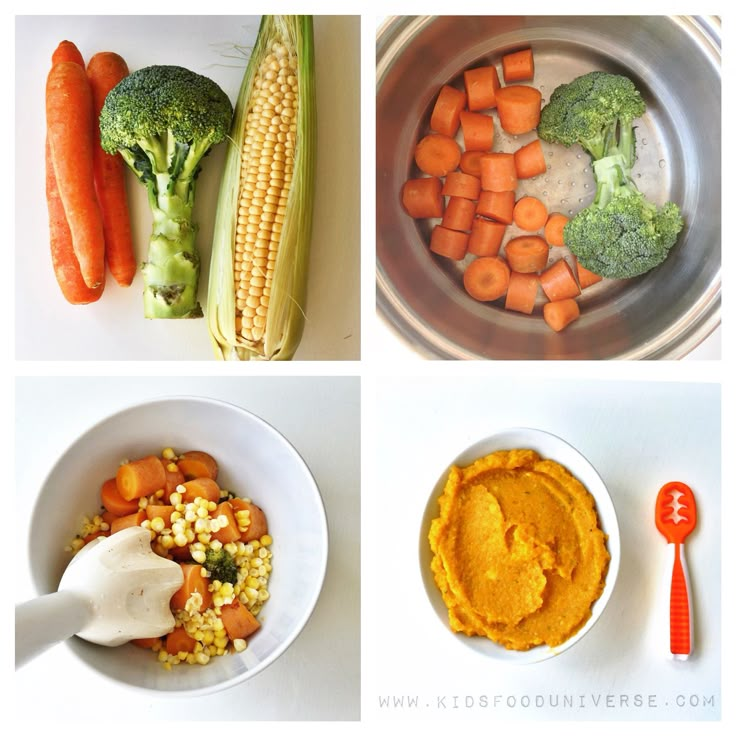 Sitting and eating when baby eats is possible, but you will likely have many interruptions as you pause to spoon-feed baby throughout the meal.
Sitting and eating when baby eats is possible, but you will likely have many interruptions as you pause to spoon-feed baby throughout the meal. - Baby won’t get as much opportunity to engage in sensory exploration. Unless you progress to giving baby their own bowl or spreading purees on the tray and encouraging baby to taste the food off their fingers, they won’t get as much opportunity to feel the puree on their hands, fingers, and face.
- Feeding baby past signs of fullness. Reading baby’s cues is important no matter what approach you’re using, but there can be a tendency to continue to feed baby past signs of fullness when spoon-feeding and sneak in “just one more bite” from that almost empty container.
- Getting “stuck” in a comfortable zone. Once baby seems to have mastered taking purees from a spoon, it can get tempting to stick with what you know. But baby can get too comfortable with the smooth texture of purees if not encouraged to progress to other textures.
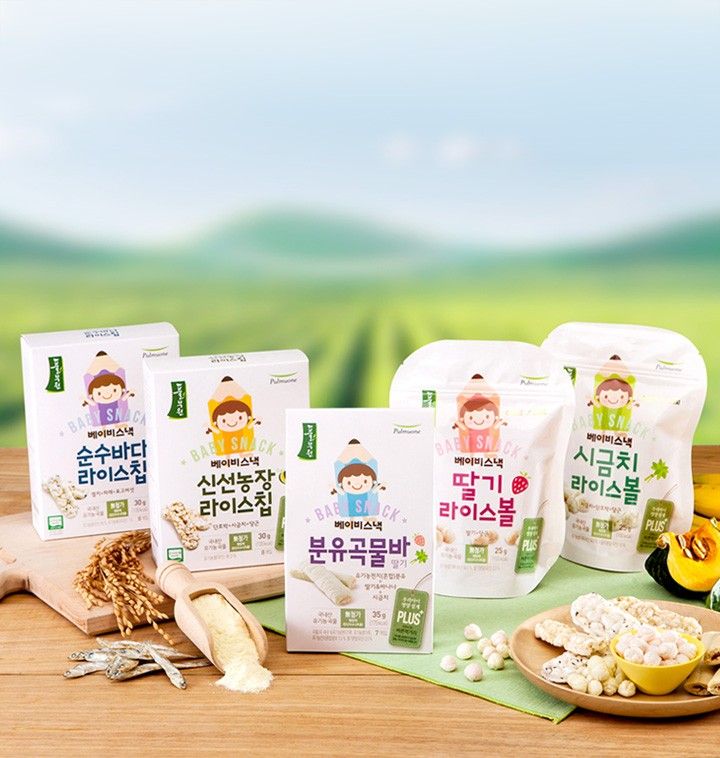 This may lead to difficulties managing these textures later on in life.
This may lead to difficulties managing these textures later on in life.
Whether you decide to go with traditional weaning (purees), baby-led weaning or a combination of both, look for these readiness signs in your baby:
- Around 6 months of age
- Sitting with minimal assistance
- Good control of their head and trunk
- Bringing hands and toys to their mouth
- Appears interested in food, possibly by reaching for or leaning forward towards food
Before you start weaning your baby, you should consult with your pediatrician to make sure your child is developmentally ready.
Helpful Tools for Baby Food MakingFortunately, most of the tools you need to make homemade baby food can already be found in your kitchen. Score!
Tools Needed- blender or food processor
- baking sheet
- saucepans
- steamer insert with lid
- knives
- veggie peeler
- spatula
- freezer tray
- storage containers for fridge
- stasher bag
- reusable pouches
- baby food maker
- highchair
- suction bowl or baby bowl
- baby spoon
- open lid cup
- bib with catch pocket
- sleeved bib
- splat mat to cover the floor
Learning Resources: looking for the best high chair, cups or spoons for your baby? Then we’ve got you covered! Here you will find How to Find the Best High Chair for Baby, an easy guide on Best First Open Cups for Baby (plus 4 tips when introducing a cup) as well as 3 Tips on How To Spoon Feed Baby (plus – our favorite spoons for purees or BLW).
All of the baby food recipes on this site and in my cookbooks are designed to enhance the natural taste of the fruits and veggies while keeping as many nutrients intact as possible. In other words, the goal is to make a puree that’s both healthy and delectable.
There are several ways you can cook baby food purees, but the main techniques I use are:
- Steaming
- Roasting
- Simmering
- Raw
Keep in mind, that as long as the produce is cooked until soft, that there isn’t a right or wrong way to cook it for baby food.
If a recipe for broccoli calls for steaming but you want to roast it because you will already be roasting some broccoli for yourself for dinner, then go ahead and roast the broccoli for your baby’s puree. Play around and have some fun with it!
Adding Spices to Baby PureesIt’s encouraged that you can serve your baby a homemade puree with a pinch of spices or herbs from the very first bite.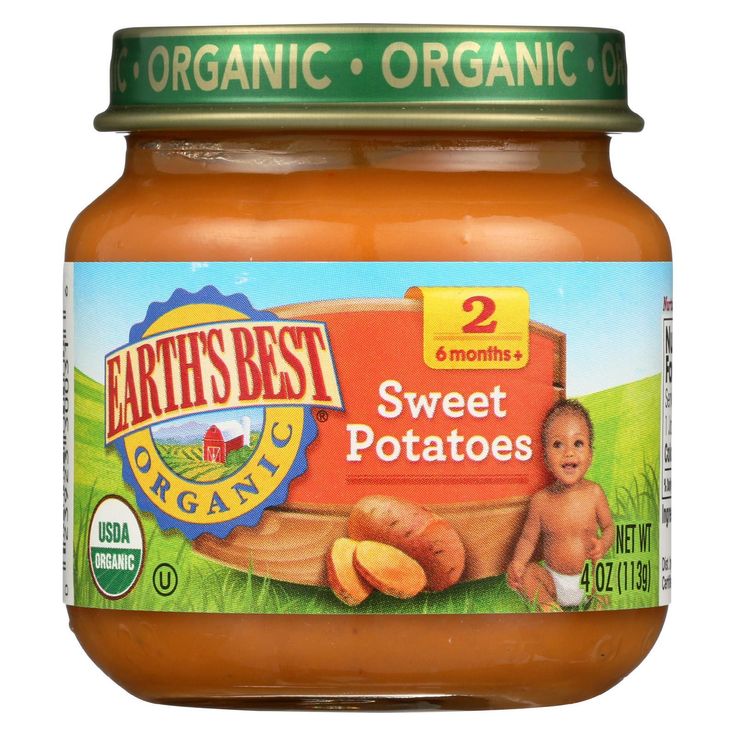
Benefits of Spices
- boost and compliment any fruit or vegetable puree
- broaden baby’s emerging palate
- add more flavor and depth into their foods
- decrease picky eating in the years to come
- have medicinal properties in them — they can help with digestive issues, boost brain functions, repair muscle tissues, and so on.
While each puree recipe on this site has a selection of spices or herbs that complement the flavors of the fruit or vegetable in the puree, it’s up to you if you want to add them. You do you! Either way, the puree recipes on this site will be delicious.
Top Spices to Add to Baby’s Puree
- Cinnamon
- Cloves
- Nutmeg
- Basil
- Mint
- Parsley
- Mild Curry Powder
- Fresh Lemon Juice
- Garlic
- Rosemary
Pureeing homemade baby food is a very straightforward event. However, it can take some practice to get the smoothest, creamiest puree for your baby.
Step-by-Step Instructions
- Place Produce In Blender: place cooked produce into a blender or food processor.
- Start Machine: turn the machine starting on low and increasing until you reach the highest setting.
- Add Liquids: add liquids (water, fresh breast milk or formula) in small increments if needed to help smooth out the puree. Root veggies may been up to a cup of liquid while fruits may not need any. Add in 1/4 cup of liquids at a time to make sure not to add too much liquids.
- Blend: it usually takes 1-2 mintues to fully blend a puree for baby. If you are getting a chunky puree, add in a little bit more water and keep blending.
Note on Blending: you will always get a smoother puree when you use a blender over a food processor. Most babies will not notice a difference between the texture of baby food made in a blender versus a food processor but if your baby is having trouble with the texture of a puree made in a food processor, you may want to try using a blender.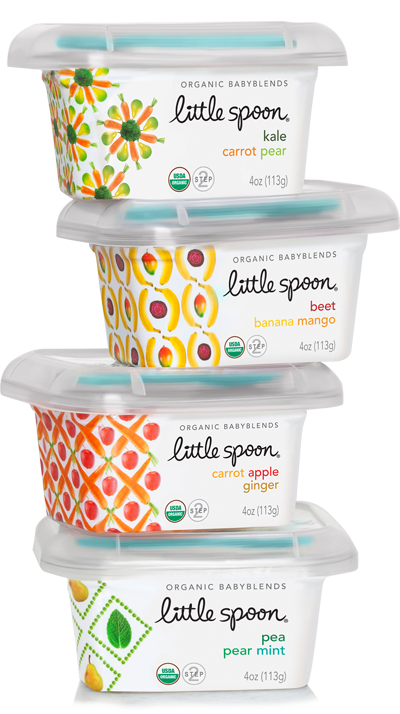
- Give It Time: Give your blender or food processor some time to work its magic. It takes 1-2 minutes of blending for each puree to get the smoothest puree. But it may take longer if you have an older blender model or you are using a food processor.
- Add Liquids: You may have to add extra liquids like water, fresh breast milk, or formula into the blender or food processor in order to get the blender really going. Hard root vegetables like carrots, sweet potatoes, beets, etc., often take at least 1-2 cups of liquids because they do not have high water content. I recommend adding liquid into the blender in 1/4 cup increments or smaller so you don’t get a runny puree.
- Cyclone Effect: You will know you have the right amount of liquid and are at the right speed when you get the cyclone effect. This is when all the ingredients are completely circling the blending without any interference.

- Scrape Down Sides: While blending, make sure to scrape the sides with a spatula to get all the produce and spices incorporated into the puree.
- Blender vs. Food Processor: A high-speed blender will give you the smoothest puree. A food processor will also work but the result is a slightly thicker puree. The upside of the food processor is that you don’t have to add as much liquid to the puree.
Just Starting: Roasted sweet potato and 1/2 cup of water.
30 Seconds: Scraped down the sides and added 1/4 cup more of water.
60 Seconds: Scraped down the sides and added 1/4 cup more of water.
90 Seconds: Added 2 tablespoons of water, and it was perfect. The puree was clearly running through the blender and the puree was getting super smooth.
Finished: A smooth puree for the win!
See the video in this post to get a step-by-step look at how to blend baby food.
Your freezer is about to become your new best friend, allowing you to keep several weeks’ worth of baby purees at the ready.
How to Freeze Baby FoodWhenever you make a puree, put several ounces in the fridge for your little one to enjoy that week, then freeze the rest of the batch for your baby to eat at a later date. Please make sure you get it in the puree into the fridge or freezer within 1 hour of cooking to prevent bacteria growth.
- Make a puree.
- Let it cool slightly.
- Transfer the puree to freezer trays or freezer jars.
- Cover the freezer trays with a lid or plastic wrap.
- Label with date and name of puree.
- Place the tray in the freezer.
- Let it freeze for at least 5 hours.
- Take the tray out of the freezer.
- Crack the purees out of the trays.
- Place the frozen purees into zip-lock baggies or stasher bags.

How to Store
Baby FoodPurees can be stored for up to four days in an airtight container in the fridge or 4 months in the freezer.
How to Thaw Baby FoodThawing may seem like a no-brainer, but it never hurts to know your options. There are three different ways to thaw purees.
Microwave- Take the frozen puree cubes that you want to serve out of your freezer.
- Place them in a glass microwave-safe container.
- Microwave in 20-second increments, stirring every time.
- The puree is ready when it is just warm to your touch.
- Grab two clean spoons, one for you and one for your baby, and test your puree before serving.
Heating Tip: To prevent the microwave from unevenly heating the puree, which can leave it with cold and really hot spots and can burn your baby’s mouth, make sure you stir between each interval and taste test it before serving to your baby.
This one takes the longest time, but it is an excellent alternative to using a microwave.
- Take the frozen puree cubes you want to serve out of your freezer.
- Place the cubes in an air-tight glass container.
- Place the container in the fridge and let the cubes thaw for 8 to 12 hours, usually overnight.
- Do not leave the puree in the container to thaw on the counter or anywhere out of the fridge, as bacteria will start to grow at a rapid rate — which is definitely not recommended.
- Note that the puree will be cold but thawed. So if your baby likes their puree warmed, you’ll have to finish the job using the microwave or stovetop method.
- In a small saucepan, add the frozen puree cubes you want to serve to your baby.
- Over medium-low heat, gently cook the puree until warm, stirring occasionally.
Thawing Tip: Some infants like their puree cold, warm, or really warm, and some will eat it no matter the temperature. You will get to know your baby’s personal preferences as the two of you bond over food.
You will get to know your baby’s personal preferences as the two of you bond over food.
WeeSprout Glass Baby Food Storage Jars
These 4oz containers with lids allow you to prepare the perfect amount of food for your little ones. No more food waste! Made with food-grade glass and a plastic lid. Microwave, freezer, and dishwasher-friendly!
View Product
How to Introduce PureesHigh chair? Check. Bib? Check. Fully charged cell phone? Check.
With this holy trinity of baby-feeding accouterment, you’re ready for that first feed.
The faces, oh, the faces your baby is about to make! Out of all the firsts, feeding is the most fun — and the messiest. So grab a few wipes, double-check that your phone has enough storage for dozens of photos and videos, and let’s get started!
Before you begin, make sure your baby has a little bit of breast milk or formula in their belly, about half of what you’d normally give in a regular feeding.
Not too full. Not too hungry. Just right.
Not too hungry. Just right.
This is not going to be a clean and simple process. Your baby may eat food one day, refuse it the next, and paint their face with it the next. It’s all okay. Playing with food is a good thing; it is simply a way for babies to explore, learn, smell, and taste the world around them. So have those wipes close by, and remember:
- Start Slowly – Two teaspoons once a day is enough food for babies for the first couple of meals. Their bodies need time to adjust and digest new food. If they are still acting hungry, give them some more breast milk or formula.
- Let the Baby Decide – Your little one should determine how fast or slow they want to eat.
- All Spoons on Deck – Have more than one spoon ready. Your baby will surely snatch one out of your hands to play with, which is a-okay.
- Have Fun – Smile at your baby throughout the experience, and try to relax.
 The more fun you have, the greater the likelihood your baby will enjoy it, too (even if they barely eat or don’t eat at all).
The more fun you have, the greater the likelihood your baby will enjoy it, too (even if they barely eat or don’t eat at all). - Build Up – After a couple of days, build up the quantity of food you offer one tablespoon at a time.
Are you ready to start the feeding? Select a puree you’ve already made. Place just one or two teaspoons of it into its own bowl and slightly warm this small amount. You can choose whether to gently spoon it into your baby’s mouth or hand the spoon over to them to attempt self-feeding. If your baby tries to grab the spoon from you and gets it into their mouth by themselves, whoa — you’ve got success on your hands. If the experience is a bit milder, and they let you spoon some puree into their mouth, enjoy it. This is a winning experience, too.
The LikelySome babies will simply not open their mouths. Some babies will take one bite, clamp their mouths, and turn away.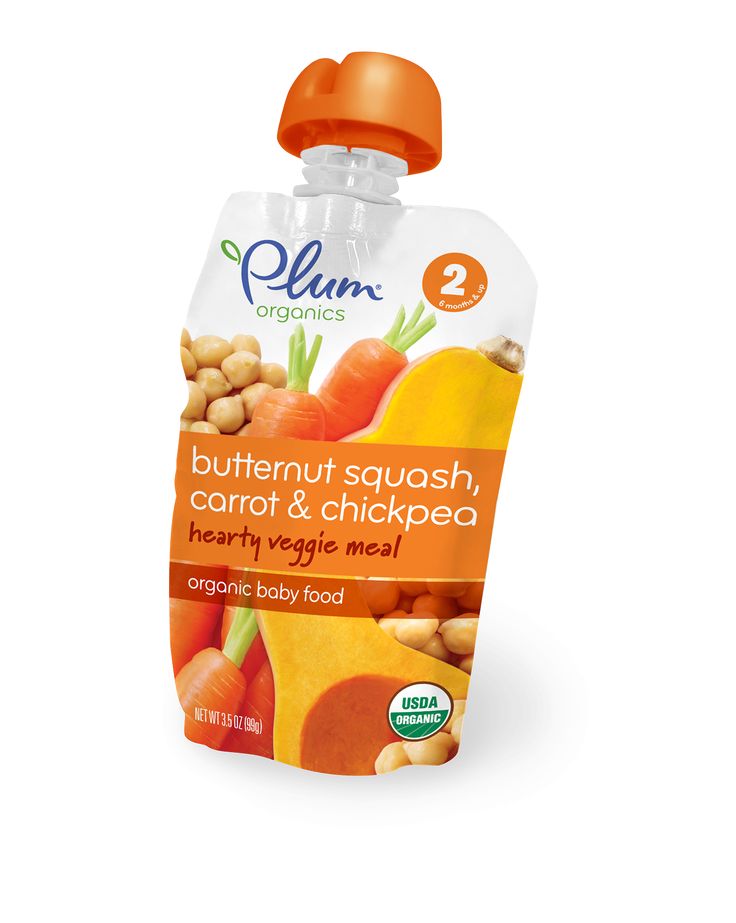 If (and when) any of this happens, don’t force the spoon into their mouth, and don’t stress out. Here are a couple of things to try:
If (and when) any of this happens, don’t force the spoon into their mouth, and don’t stress out. Here are a couple of things to try:
- Put a bit of the puree at the end of your finger and see if your baby will suck it off. This is an unintimidating way to begin, especially as spoons can be scary for little ones.
- Pour a tablespoon of puree onto the high chair tray, and allow your baby to play with it if they want. This is a less micromanaging approach to letting the baby explore new food. As babies love to put everything in their mouths, odds are at least some will get in (or near) it.
- If your baby has no interest in these options, end the feeding. Dispose of the one or two teaspoons you warmed. Put the remaining, unheated puree in the refrigerator to try again tomorrow.
Remember that before their first birthday, babies receive their main source of calories, vitamins, fat, and protein from your breast milk or formula. At this point, any puree or solid food you give your baby is mainly used to teach them how to eat and explore real food.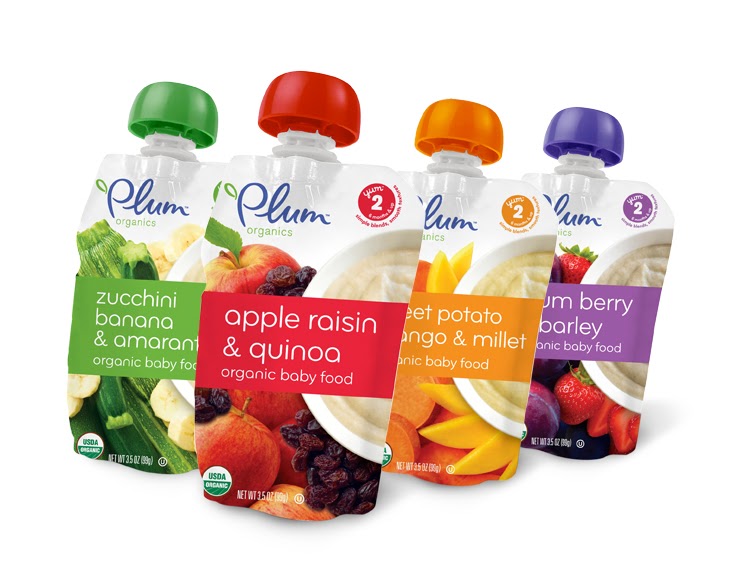.jpg)
Not sure which foods to offer first? These 10 foods are nutrient-dense, easy to make, and tasty purees are a choice for your baby.
- Avocado
- Banana
- Sweet Potatoes
- Apple
- Broccoli
- Pear
- Carrot
- Yogurt
- Oats
- Green Bean
You will want to avoid these foods until your baby is developmentally ready for them:
- Whole nuts, seeds
- Clumps of nut butter
- Dried fruit
- Hard candy
- Hard, raw fruits and veggies
- Popcorn
- Hot dogs
- Whole grapes
- Added salt and sugar
- Honey until 1 year of age
- Cow’s milk until 1 year of age
Aim to feed baby a variety of flavors to help expand her palette, which can help reduce picky eating. Try to make sure you serve at least one iron-rich food per meal to help prevent iron deficiency anemia. To begin, serve thin pureed foods that
To begin, serve thin pureed foods that
Most babies are ready to start purees around six months of age. Start with 1-2 meals a day and keep the same amount of formula or breast milk feedings, usually five. Note that there is no one right schedule for your baby.
7am- 7:30-wake-up, bottle/breastfeed
7:30am- 8:30am- play
8:30am- 9am- avocado puree
9am- 10:30am- morning nap
10:30am- 11am- bottle/breastfeed
11am- 12pm-play
12pm-2pm- afternoon nap
2pm- 2:30pm-bottle/breastfeed
2:30- 3pm- banana puree
3- 3pm -play
4pm- 5pm- cat nap
5pm- 5:30pm- bottle/breastfeed
5:30pm- 6:30 pm- play
6:30pm- bath
7pm-7:30pm- bottle/breastfeed
7:30pm- bedtime
If your baby is not eating 2 solid meals a day yet, go ahead and increase purees to twice a day. Once you have introduced a variety of single-ingredient purees, you can start offering combination purees.
7am- 7:30am- wake-up, bottle/breastfeed
7:30-8:30am- play
8:30am– 9am- apple and carrot puree
9am-10:30am- morning nap
10:30am- 11am- bottle/breastfeed
11am-12pm-play
12pm- 2pm- afternoon nap
2pm- 2:30pm- bottle/breastfeed
2:30- 4pm- play
4pm- 5pm- cat nap
5:00pm- 5:30pm- bottle/breastfeed
5:30pm- 6:00 pm- play
6:00pm- 6:30pm- sweet potato and chicken puree, yogurt on the side
6:30pm- bath
7pm- 7:30pm- bottle/breastfeed
7:30 pm-bedtime
By now, your baby should be getting 3 meals a day, in addition to formula or breast milk, which is usually reduced to 4 feedings per day. Around 9-10, your baby should be introduced to chunky purees and then quickly to finger foods.
7am-7:30am- wake up, bottle/breastfeed
7:30am-8:30am- play
8:30am- 9am- breakfast of a quartered hard-boiled egg, halved raspberries, whole grain pancakes
9am-10am- play
10am-12pm- morning nap
12pm- 12:30pm-bottle/breastfeed
12:30pm-1pm- play
1pm- 1:30pm- lunch of cut up baked chicken, steamed broccoli and rice
1:30pm-2:45 pm- play
2:45pm- 3pm- snack of whole grain O’s, cut up cheese stick and sliced strawberries
3pm- 4:30pm- afternoon nap
4:30pm- 5pm- bottle/breastfeed
5pm-6pm- play
6pm- 6:30pm- dinner of ground hamburger meat, baked sweet potato sticks, steamed peas and carrots
6:30pm- bath
7pm-7:30pm- bottle/breastfeed
7:30 pm-bedtime
Babies are less likely to gag or choke on purees compared to solid foods. When babies first suck on the breast or bottle, they are learning how to swallow liquids. Transitioning to purees can help teach your baby an effective swallowing technique, by propelling foods backward with the tongue and swallowing.
When babies first suck on the breast or bottle, they are learning how to swallow liquids. Transitioning to purees can help teach your baby an effective swallowing technique, by propelling foods backward with the tongue and swallowing.
Although it may still look and feel intense or scary the first time a parent witnesses it, gagging is different than choking.
GaggingWhen a baby gags, it is most likely because food that has not been chewed well has gotten too far back in the mouth. The gag reflex is a built-in protective mechanism to protect the airway from food. With practice, your baby learns that they need to chew first, then swallow the food. Fortunately, with continued practice with eating, the gag reflex should lessen over time.
Signs of gagging include:- sounds, such as coughing or hacking
- baby’s skin may turn red or a darker shade
- baby’s eyes might water
Babies usually recover fairly quickly, and you may see the food come forward in their mouth. Although not as common, vomiting after gagging may happen. During this time, watch closely and do your best to stay calm.
Although not as common, vomiting after gagging may happen. During this time, watch closely and do your best to stay calm.
On the other hand, choking happens when there is a blockage of the upper airway, from food or an object. Complete blockage of the airway prevents a person from breathing effectively. Therefore, choking is a true medical emergency and requires quick intervention on your part.
Signs of choking include:- baby is quiet
- baby’s skin may turn blueish in color
- baby won’t be able to cry or make much sound
Your baby may become unresponsive or lose consciousness if the food is not cleared. This is why it’s recommended to know CPR before starting solids of any kind.
How to Keep Baby SafeAs a parent of two, I know how scary it can be to introduce solid foods to your baby. With the proper precautions and knowledge, the fears will loosen and feeding your baby can become a wonderful adventure for both of you.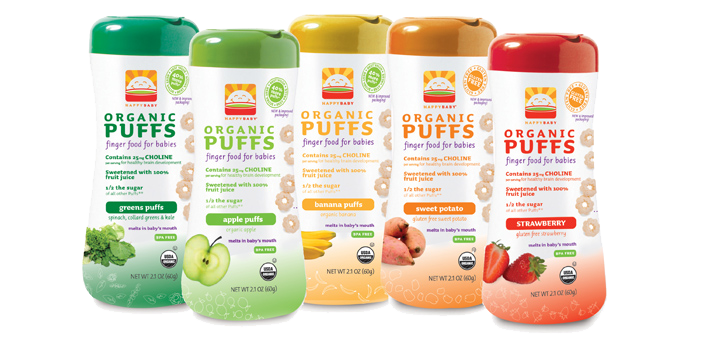 To be prepared, we recommend you attend a live class in your area or take this online Baby CPR Course.
To be prepared, we recommend you attend a live class in your area or take this online Baby CPR Course.
- Always supervise with food – sit with your baby and try not to multi-task while your baby is eating.
- Baby should be sitting in an upright position for all meals and snacks, not reclined. If your baby starts to get sleepy during eating, remove food.
- No eating in the car seat unless an adult is in the backseat supervising your baby.
- Do not let baby eat on the go. Once your baby is crawling or walking, avoid letting them move around with food in their mouth or holding food in their hands.
- Check the temperature of foods before offering them.
- Check baby’s mouth after they are done eating. Some babies may pocket food in the sides of their cheeks or get food stuck to the roof of their mouth as they are learning to eat. If you see any food remaining, encourage your baby to keep chewing, spit it out if they need to, or take sips of water or milk.
 Avoid sticking your finger in your baby’s mouth to get the food out – we want baby to learn how to manage taking care of the food.
Avoid sticking your finger in your baby’s mouth to get the food out – we want baby to learn how to manage taking care of the food.
Safety 101: CPR and Choking (0-12 years)
On online course for today’s modern parent! This course goes over all the information you need to help your child if they are choking.
- Expert-taught course from a Certified CPR Instructor
- 30+ minutes of on-demand content
- 10+ downloadable guides and checklists
- 2-years of access to course material – refer back when you need it most
Enroll Today
How to Teach Babies to ChewWhen babies first start chewing, the movement you see is a basic up and down jaw movement, sometimes called munching, that will eventually progress into a mature chewing pattern, called rotary chewing. Throughout this process, babies are also developing side-to-side tongue movements, called tongue lateralization. Tongue lateralization helps your baby push food over to their gums, where the molars will eventually come in, and where the heavy work of chewing happens. As your baby chews the food multiple times, it forms into a little ball or “bolus” of food, which is then transferred to the back of the mouth for swallowing.
As your baby chews the food multiple times, it forms into a little ball or “bolus” of food, which is then transferred to the back of the mouth for swallowing.
Purees can also be used to develop the skills needed for chewing. You can place a spoonful of puree to the sides of the mouth as you would with a teether or soft piece of food. The purpose of this is not to expect your baby to start “chewing” the puree in the way that we think of chewing as adults, but rather to encourage your baby to start working tongue lateralization.
Frequently Asked Questions
How many ounces will baby actually eat?
This varies with each baby so it just depends! Some babies will only have a taste and be done, and others will want more and more. Some babies have a larger appetite than others so it’s hard to know but start with one teaspoon and work your way up to a tablespoon, and then more if your baby is still interested. Baby will eat more as they get older but always pay attention to your baby’s hunger and fullness cues to know when to stop feeding.
Baby will eat more as they get older but always pay attention to your baby’s hunger and fullness cues to know when to stop feeding.
How many ounces of purees should baby eat?
By the time baby is ready for finger foods, she should be eating around 4 ounces of food at each meal. If it is more or less than this, do not worry. Babies get most of their nutrition from formula or breast milk until they turn 1 year old.
Does baby need teeth to eat?
The question of how babies can chew foods without teeth makes any parent scratch their heads! But in reality, we all chew food with our back molars, not our front teeth, which baby doesn’t get until 18-22 months of age. Good thing babies have super tough and strong gums, which they use to mash, gnaw and chew foods. Baby’s gums are better at chewing food than you would think, and your baby will be able to chew more foods the older they get, even without their molars.
Baby’s gums are better at chewing food than you would think, and your baby will be able to chew more foods the older they get, even without their molars.
Can you mix baby-bed weaning and purees?
Absolutely! Both purees and solid foods are great ways to introduce your baby to new flavors and textures. Babies actually learn to swallow liquids first, whether in the form of breastmilk or bottles. Purees are similar to offering liquid that’s been thickened a bit, so this can help with introducing your baby to a texture change and getting practice with swallowing solid food. Just consider limiting the amount of times you switch back and forth between soft solids and purees during each meal, at least when your baby is first learning to eat. Instead, you could offer a veggie puree as the “appetizer” before soft solids at one meal, or yogurt as the “dessert” at another meal.
Puree Feeding
Tips- Relax: try to relax and don’t worry too much about how much baby eats. It should be fun for you and baby.
- Timing: babies tend to tolerate purees best 1 hour breastfeeding or bottle, when they aren’t too hungry or too full.
- Limit distractions: turn off screens, put away toys, and sit down face to face with baby during the meal.
- Follow baby’s lead: it can be easy to overfeed when using traditional weaning vs baby led weaning, so always follow baby’s cues for when they are done eating. Turning away from the spoon, closing his mouth, or pushing food away are all signs that baby is finished with the meal.
- Start with a small amount: and small servings. 1-2 oz of food per meal is adequate. Remember, these servings will be smaller than you think and at this stage, breast milk or formula will still be your baby’s primary source of calories and nutrition.

- Offer the spoon and allow waiting time: after you bring the spoon toward baby’s mouth, wait for her to open and accept it. Allow baby to close her top lip and suck puree off the spoon, while you guide the spoon straight out of the mouth. Avoid scraping the spoon on the roof of the mouth as you bring it back.
- Use shallow spoons or flat spoons: these help baby with clearing puree off with the top lip. A couple options we love include Olababy and ezpz mini spoon.
- Give time to practice: at first you might notice baby pushing the food back out and then swallowing. With time and practice, this forward/backward reflexive motion with the tongue will fade and baby will start swallowing more food than he pushes back out.
- Have a back spoon (or two!): even very young babies may want to be involved in the process as much as possible. Giving baby an extra spoon to hold can be helpful in giving baby sense of control and promoting hand-eye coordination.

- Let baby get messy! Encourage touching and playing with purees for a full sensory experience.
Or watch a shortened version of this video here.
Make Baby Food
Make baby food puree per the recipe. This could be by steaming, roasting or sauteing.
Freeze Purees
Pour puree into freezer tray or small baby food jars.
Lable the freezer tray or baby food jars with the recipe name and date.
Place the tray or jars in the freezer and freeze for at least 5 hours.
Pop the frozen baby food cubes out and place them into a zip-lock baggie or stasher bag.
Thaw Baby Food
Microwave –
Take the frozen puree cubes that you want to serve out of your freezer.
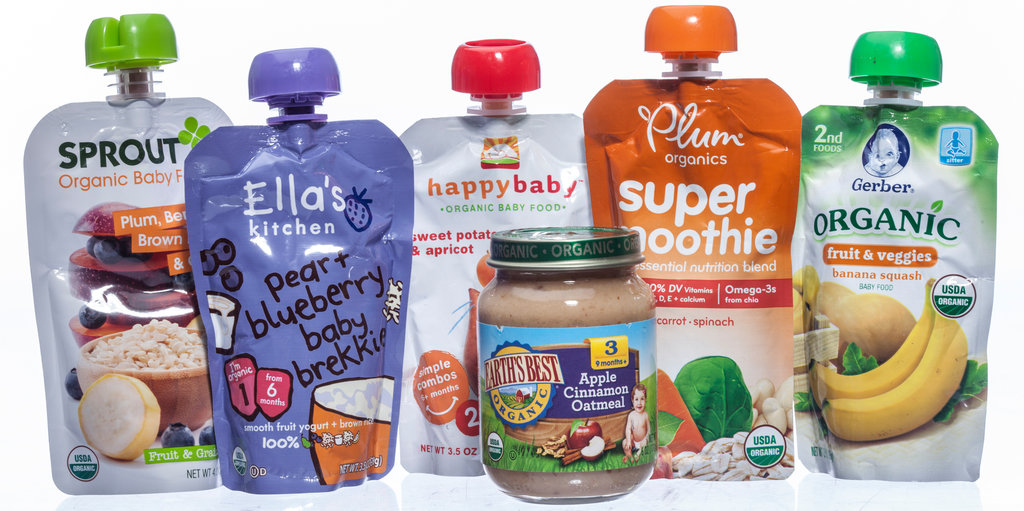 Place them in a glass microwave-safe container. Microwave in 20-second increments, stirring every time The puree is ready when it is just warm to your touch. Grab two clean spoons, one for you and one for your baby, and test your puree before serving.
Place them in a glass microwave-safe container. Microwave in 20-second increments, stirring every time The puree is ready when it is just warm to your touch. Grab two clean spoons, one for you and one for your baby, and test your puree before serving.Fridge –
Take the frozen puree cubes you want to serve out of your freezer. Place the cubes in an air-tight glass container. Place the container in the fridge and let thaw for 12 to 16 hours. Do not leave the puree in the container to thaw on the counter or anywhere out of the fridge, as bacteria will start to grow at a rapid rate – which is definitely not good. The puree will be cold but thawed, so if your baby likes her puree warmed, you’ll have to finish the job using the microwave or stovetop method.
Stovetop –
In a small saucepan, add the frozen puree cubes you want to serve to baby.
 Over medium-low heat, gently cook the puree until warm, stirring occasionally.
Over medium-low heat, gently cook the puree until warm, stirring occasionally.Serve and enjoy!
Blender
Bumkins Baby Bowl
Freezer Tray
Tripp Trapp High Chair
Did you make this recipe?
Tag @babyfoode on Instagram and hashtag it #babyfoode!
Pin Recipe Email a Friend
Organic vs Conventional Complementary Foods: What's the Difference - Parents.ru
Pro Nutrition
- Photo
- damircudic/Getty Images/E+
HiPP expert
Monogamy usually starts at 60 months of age
it is at this age that the baby's digestive system is ready to accept foods other than breast milk.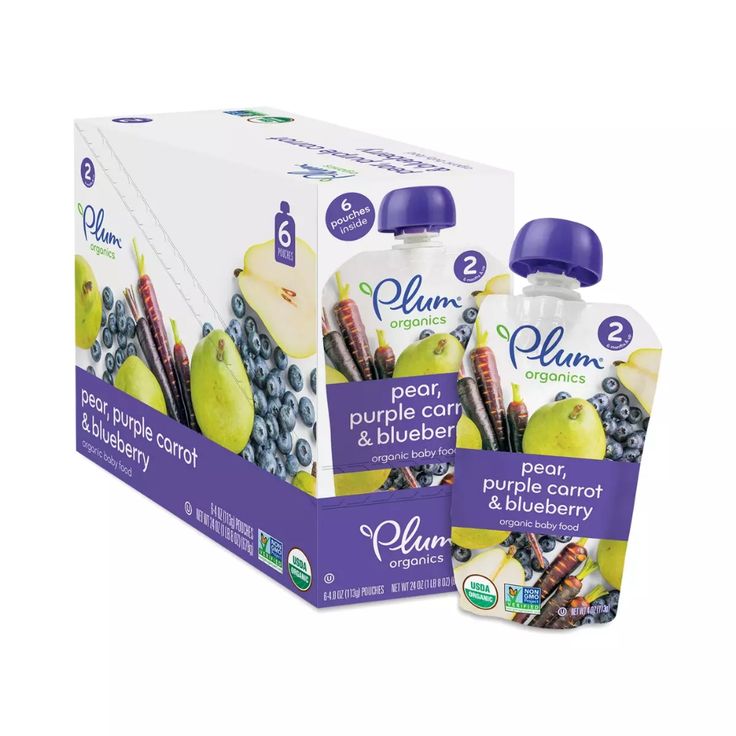 Products for the introduction of the first complementary foods should be chosen very carefully. One of the safest options is monocomponent purees. Today, parents can find such products marked “organic” or “BIO” on store shelves: these labels mean that the food consists only of natural ingredients and does not contain any dyes, preservatives, flavors or GMOs. Such monocomponent purees contain only one vegetable, for example, broccoli or cauliflower, which are the safest for a child trying an unfamiliar product for the first time. nine0003
Products for the introduction of the first complementary foods should be chosen very carefully. One of the safest options is monocomponent purees. Today, parents can find such products marked “organic” or “BIO” on store shelves: these labels mean that the food consists only of natural ingredients and does not contain any dyes, preservatives, flavors or GMOs. Such monocomponent purees contain only one vegetable, for example, broccoli or cauliflower, which are the safest for a child trying an unfamiliar product for the first time. nine0003 What's the difference?
The main difference and the main plus of bio-products is the method of production. The fruits, vegetables and cereals that go into their preparation are grown according to the principles of organic farming, that is, without the use of pesticides, growth regulators, artificial fertilizers and pest control chemicals. In conventional agriculture today, the use of such substances, unfortunately, is quite common. Their traces remain in the final product, so such food can harm the child, who is still very sensitive at an early age. nine0003
nine0003
Organic purees, cereals, soups and drinks are safer for the baby, while retaining their natural rich taste and the maximum amount of nutrients. We do not know how the fruits and vegetables sold in the store or in the market were grown, so making your own purée for the first complementary foods becomes unsafe. Only those parents who grow zucchini, cabbage, carrots and other products themselves and are confident in their quality (like Jamie Oliver) can be confident in the safety of home food. nine0003
Organic food is grown only in environmentally friendly conditions, therefore it minimizes the risk of harmful substances entering the child's body and reduces the likelihood of food allergies in the crumbs.
- Photo
- tatyana_tomsickova/GettyImages/iStockphoto
Strict control
Baby food goes through multi-level stages of quality control, and organic products go through even more checks by specialists. Experts observe its production at all stages: from choosing the soil to tasting the purees, cereals, soups and drinks themselves. Only after passing all the trials and tests, organic food receives the Organic or BIO labels, which guarantee the quality, safety and environmental friendliness of the product that will be included in the menu of a small child. Strict checks, environmentally friendly production, the absence of dubious components in the composition - all this makes organic nutrition a suitable option for the first complementary foods, and introducing a child to new foods is healthy and safe. nine0003
Experts observe its production at all stages: from choosing the soil to tasting the purees, cereals, soups and drinks themselves. Only after passing all the trials and tests, organic food receives the Organic or BIO labels, which guarantee the quality, safety and environmental friendliness of the product that will be included in the menu of a small child. Strict checks, environmentally friendly production, the absence of dubious components in the composition - all this makes organic nutrition a suitable option for the first complementary foods, and introducing a child to new foods is healthy and safe. nine0003
More useful materials about proper nutrition for the little ones - in our channel on Yandex.Zen.
Lyubov Prishlaya
Today they read
Literacy test: do you make mistakes in these New Year's words and congratulations?
Designer interior and dad’s photo on the shelf: Sobchak showed two children’s rooms in the house
Dad’s daughter: Shiloh Jolie-Pitt changed her image and became a copy of her father0003
Calculate your year: what awaits you in 2023 - forecast by date of birth tissues of the human body, so the state of health is determined by the quality, digestibility, biological and energy value of food. It creates the prerequisites for the proper development of the body and its functioning in the future. nine0003
It creates the prerequisites for the proper development of the body and its functioning in the future. nine0003
Specialists, scientists, physicians associate the increase in the incidence of children over the past century with changes in diet. From the first years of life, a child's body is extremely susceptible to various undesirable and harmful components, such as toxins, allergens, which are often food additives of chemical origin.
The popularity of natural and organic products has exploded in the last decade as more consumers recognize their health benefits. The supply is formed by demand, therefore, food products appear on the market every year, which are characterized by a high degree of safety, attractive consumer properties, the presence of well-digestible proteins and micronutrients, minerals and vitamins that are important for the formation of a healthy body. nine0003
It is a balanced and healthy diet based on optimally selected food products that will provide children with full development, good physical shape and mood, and the formation of rational eating habits.
Baby food is generally characterized by high nutritional value and good taste, safety, balanced composition. But the variety of terms on the label, such as "natural", "ecological", "farm", "organic", indicating the beneficial properties of the content, often confuse consumers, and in some cases are contradictory and misleading. nine0003
What is the difference between these definitions, what do they mean, what are the characteristics of food products? What are the benefits of additional quality criteria, such as being labeled "organic"?
natural products are products that consist of natural, natural ingredients and do not contain chemical additives or impurities. At the same time, the term “natural product” can be interpreted in a completely different way, since the presence of this phrase on the package does not guarantee the absence of chemical additives in its contents: the manufacturer is not obliged to track the sources of raw materials, materials, and the technological process for preparing such products.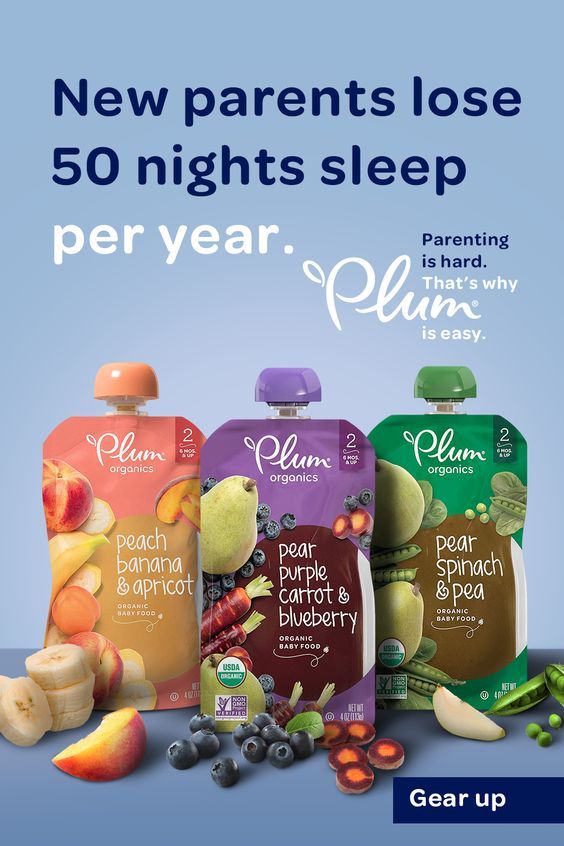 nine0003
nine0003
Farm products are grown and produced on privately owned farms and in most cases non-industrial. The term "farm products" has gained a lot of popularity in recent years: it began to be often placed on labels. But sometimes the use of the "farm product" status is speculative, as the packaging doesn't say how the ingredients were produced. Due to the fact that there are no legislative acts on the quality of farm products, it is possible that they can be produced using herbicides, chemical fertilizers, growth hormones, and so on. nine0003
The composition of organic products excludes the presence of additives of artificial origin, such as preservatives, dyes, flavors, flavor enhancers, as well as the use of genetically modified organisms. The raw materials used in the production of organic food are grown without the use of pesticides, herbicides, chemical fertilizers, antibiotics, hormones, growth regulators. It is believed that the consequence of compliance with such conditions is the absence of chemical additives in organic raw materials. This gives the products an improved taste, a more pronounced aroma, and ensures their complete chemical composition. nine0003
This gives the products an improved taste, a more pronounced aroma, and ensures their complete chemical composition. nine0003
The dominant difference that distinguishes organic products is the strict requirements for the quality of their ingredients, production technology, as well as the conditions under which the raw materials for their production were obtained:
- organic products are produced in environmentally friendly regions, natural natural conditions, away from megacities, highways, industrial areas. Ecological agriculture helps to preserve the environment and provide future generations with a healthy and comfortable life; nine0087
- only genetically modified and untreated seeds are used in the cultivation of cereals, legumes, vegetables, fruits and other organic products.
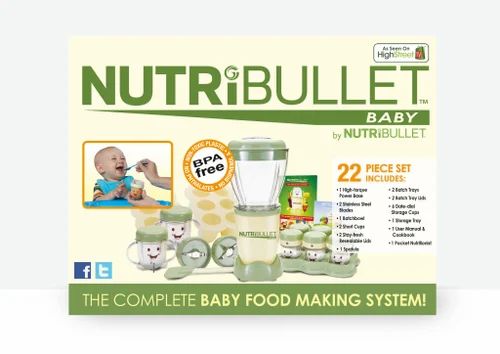 Plants grow naturally. Chemical fertilizers, herbicides, pesticides, hormones, growth stimulants are not used in organic agriculture;
Plants grow naturally. Chemical fertilizers, herbicides, pesticides, hormones, growth stimulants are not used in organic agriculture; - finished organic products do not contain flavors, dyes, emulsifiers, stabilizers, preservatives and other additives of artificial origin; nine0087
- to confirm the status of "organic", the food product is subjected to mandatory regulatory and systematic quality control "from grain to counter". Quality control is carried out by authorized state services - accredited certification bodies, as well as laboratories of the manufacturer itself;
A food product that has successfully passed the entire quality control cycle, and this is confirmed by certification bodies, receives the appropriate certificate, and a special “organic” mark is applied to its packaging: this distinguishes it from other products. nine0003
Therefore, a specific mark and label for organic products is used in relation to the production process and products, confirming that they have been produced and processed in an environmentally friendly way, and that all principles of organic production have been respected “from farm to consumer table”. The sign and the label are elements that confirm the quality of the production process, and not just the product itself.
The sign and the label are elements that confirm the quality of the production process, and not just the product itself.
Therefore, certified organic products are products that are produced, processed, packaged in strict compliance with specifications or government standards and then certified as "organic". The definition means that the product is produced with the exception of toxic effects on the environment, does not contain agrochemicals, pesticides, in its production did not use genetically modified seeds or products, hormones, chemicals, it is free from transgenic organisms and so on. nine0003
Organic products can be obtained on your own farm, that is, by self-breeding animals, growing vegetables, fruits, grain crops, which is accompanied by soil quality control and excludes the use of chemical fertilizers, hormones to accelerate the growth of plants and animals and protect them from diseases. Compliance with all the necessary conditions is a rather complicated process.
The second way to produce organic food is to buy organic raw materials. nine0003
As a result of fulfilling all the listed requirements and production conditions, organic products do not contain traces of pesticides, chemical additives, mycotoxins and other things, which makes it possible to limit the impact of such substances on the body of children. Infants are more susceptible than adults to the possible negative effects of various undesirable components.
Organic products are distinguished by their taste and higher nutritional value: on average, they contain 20-50% more vitamins, minerals, and biologically active substances compared to products produced using traditional technologies. nine0003
For example, organic baby cereals have advantages over conventional ones: a more balanced amino acid composition, a higher content of vitamins and minerals than with traditional methods of growing grain crops, which means that the composition and taste of organic cereals are much better and richer . At the same time, the range of organic cereals harmoniously complements the always available conventional baby food cereals, which are characterized by excellent taste, high nutritional value and safety due to strict requirements for baby food in the world and Russia, careful selection of raw materials and materials, strict technical and chemical control of technological production process. nine0003
At the same time, the range of organic cereals harmoniously complements the always available conventional baby food cereals, which are characterized by excellent taste, high nutritional value and safety due to strict requirements for baby food in the world and Russia, careful selection of raw materials and materials, strict technical and chemical control of technological production process. nine0003
Thus, organic and traditional baby food is a unique case when “healthy” does not mean “tasteless”, and the properties “healthy” and “tasty” harmoniously combine, complement and balance each other.
* Breast milk is the best food for babies. WHO recommends exclusive breastfeeding for the first 6 months of a child's life and continued breastfeeding after complementary foods are introduced until the age of 2 years. Before introducing new products into the baby's diet, you should consult with a specialist. The material is for informational purposes and cannot replace the advice of a healthcare professional.











